İpek: As far as I know, you are not a gallery artist and a collective member, and you don't have a website. Therefore, while inviting you to make an interview, it was both frightening and exciting to find so little information about you on the Internet. Can you talk about your production practice and perspective on the photography?
Ali: Actually, I am not that kind of person who produces photographs regularly, who is with the camera constantly to take some photographs. There are several reasons for this, but the biggest reason is that I am the kind of person who likes to take photographs when I find my own story. I don't consciously choose the story either; it is something I am approaching emotionally and intuitively. When it can attracts me and to takes me somewhere, I go after it and find myself in a story.
I think a lot about the story before and during the process. I research the subject literary, visually, and academically. The reason I do this research is that I am actually wondering about it. I go on through the questions of what I can do with and how I should approach the subject... Because when I go on with the excitement that comes with the time that the story first springs into my mind - which I did at various times, it's a practice I've learned from there - I have realized that I can't do anything. The photography is not a purpose for me, it has an instrumental side. I have questions such as how I can enrich it, how I should approach it, how I can get to the emotional/ informative essence that I aim. So I string out a lot of time between the two projects.
I don't have a direct photographic practice in my life. I am into the photography because I can, but I am not satisfied with that. I feed myself from other things, I can express myself. For example, teaching is a part of it. When I give lessons, I also discover new things together with the participants. Or making indirect readings on the photography… In brief, if there is a story that I can feel, I go after that. Instead of starting this story immediately, I start with absorbing it which sometimes takes 1-2 years.
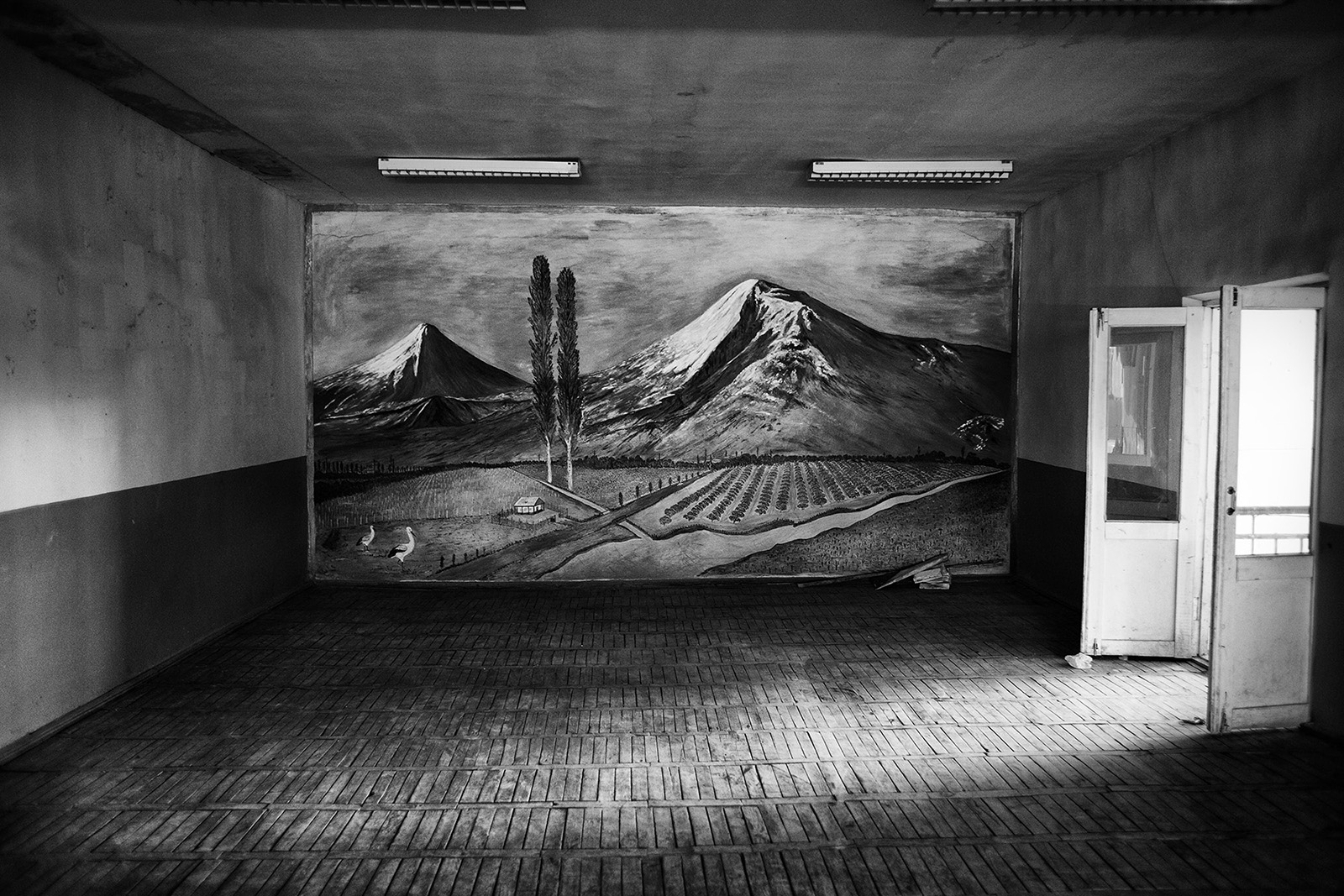
Ezgi: It's like you are already on your way to work on a subject while it is coming to you. It seems to me like the way of you find a subject and the way of the subject finding you is really intertwined.
Ali: For example, the deepest reason lies behind me making Araf is that: we were doing a work on refugees in Van for Delegation of European Union to Turkey. Of course, I had seen a lot about asylum seekers, but this was the first photographic encounter. I have worked with various groups of asylum seekers: Iranians, Iraqis, Afghans… Whom I was impressed most was Afghans. Because there was a family in a house where I went for taking photographs: woman, husband, and a child. I photographed the woman that day, and I heard the next day that she died because she could not go to the hospital for bureaucratic reasons. I always wanted to do something about this, but I had to create the time and financial sources for it. It took me a while to go on with the story, but I finally did. In brief, we encounter with the subject, dear Ezgi. If the desire that arises with this encounter does not die in a certain time, I want to tell the story in one way or another.
In the meantime, I am trying to collaborate with various NGOs in my projects. When you work in this way, you share the work with the relevant ones and enrich the result. And what you have produced becomes a visual text for right defenders.
Ezgi: There was a sentence you said on fotoroportaj.org: "There is an image that we draw in our minds, such as the Anatolian people…" or elsewhere: "Even calling people as refugees and asylum seekers have a side that makes the people forget that they are human." You have a tendency to tell these people's stories on their own language. And how does the language that shapes Araf make itself a place among all these?
Ali: What I was trying to say as a young man in that quote was: In most of the photography projects we encounter, the photographs reduce these people to their clothes, food, or poverty. There are stereotypes that removes them from their identity, language, and subjectivity of life. These images are memorized and reduced to stereotypes. However, our aim was creating a space for the people who approach the subject with a fresh mind and also carry these sensitivities.
In Araf, I am trying to apply this practice of photography which I developed that I have mentioned above. I am trying to approach the people I photographed with their own stories through their own ways of seeing. When I look at the other works made with refugees and asylum seekers, I often see the drama element, violence, poverty, and destituteness. This drama element raises the value in works. Of course, there are channels in which these works fit and find a meaning. My approach in Araf was to accept the drama in that environment. But rather repeating the same images again, I have chosen to show that these people are waiting here for many years without taking a step forward or back, and they are stuck in a spatial and temporal space, although they are waiting as if tomorrow they would leave for another life they have been dreaming about. These people don't live in the past or the present; they are focused on the future. The future will come one day, but when? Children are born, dead people are buried in a land that they don't feel they belong… These people learn Turkish to live here, they learn Kurdish to live here, they try to create a working area for themselves; yet they still don't feel they are from here. They live like they would get a visa for a third country tomorrow and they don't have roots. They always hope to leave. If we come to the stylistic language of the photographs: These photographs would only be seen as portraits, unless I define who the people in the frame were and how they lived. For this definition, I needed a text or another symbol. I chose to act with the instinct that the photographs should also contain the symbol. When I shared the first examples I produced with my friends, the idea that I was getting closer to the effect I aimed was strengthened. A question mark rises when I put the curtain on. Thinking a little more, it comes up that the curtain has meanings of exile and not belonging to a place. It is like the whole existence of that person is limited with that curtain. Actually, the photographs are really ordinary and simple, but it makes you feel the identity issue, the relationship with place, and not belonging somewhere. It is a result that came out of subjects that I think a lot and developed a sensitivity.
Ezgi: All of your works is based on these sensitivities.
Ali: Thank you. I think the main issue here is about where I came from culturally and politically, and my life practice. I have always had a life practice built on empathy and sympathy. So, you are disciplined with this spontaneous practice, and you can understand, contact, see another group like you. We are also sharing the same world in this sense, and it is about having so many beautiful people around me.
İpek: Actually you already talked a lot about it, but can you explain the way you've been working on Araf a little bit more?
Ali: I thought a lot about the idea of the curtain: how should I use it, how should I take the photographs, how it would get to a state that I wanted. What I felt was becoming forlorn. That is what I had when I saw that woman's death and as a result of my interviews. The fact that they are somehow allowed to live here does not mean they are being protected. You can get that feeling when you catch the glimpse of it. But I didn't approach this as an object. This is about how I should approach when giving them back the feeling I get from them through a photograph. When the audience saw the photograph, it should not create a sense of pity, on the contrary, I wanted the audience to bother and think. In this direction, the idea of using the curtain has occurred. Then I searched similar works, I found the curtains of the "Istanbul Memory" in a classical sense. After some experiments, I saw that wanted perception did not occur. I was a bit scared in the process, frankly, people are waiting for you to sustain a certain visual language, and there is something very different here in terms of style. I was afraid of being seen only as "contemporary art" or being perceived as trying look like it. But when I think about it again, I realized that I don't care much about how it is seen. I think the thing that is essential for me is producing a content, and the story itself determines the format. So, I don't want to set bounds to myself.
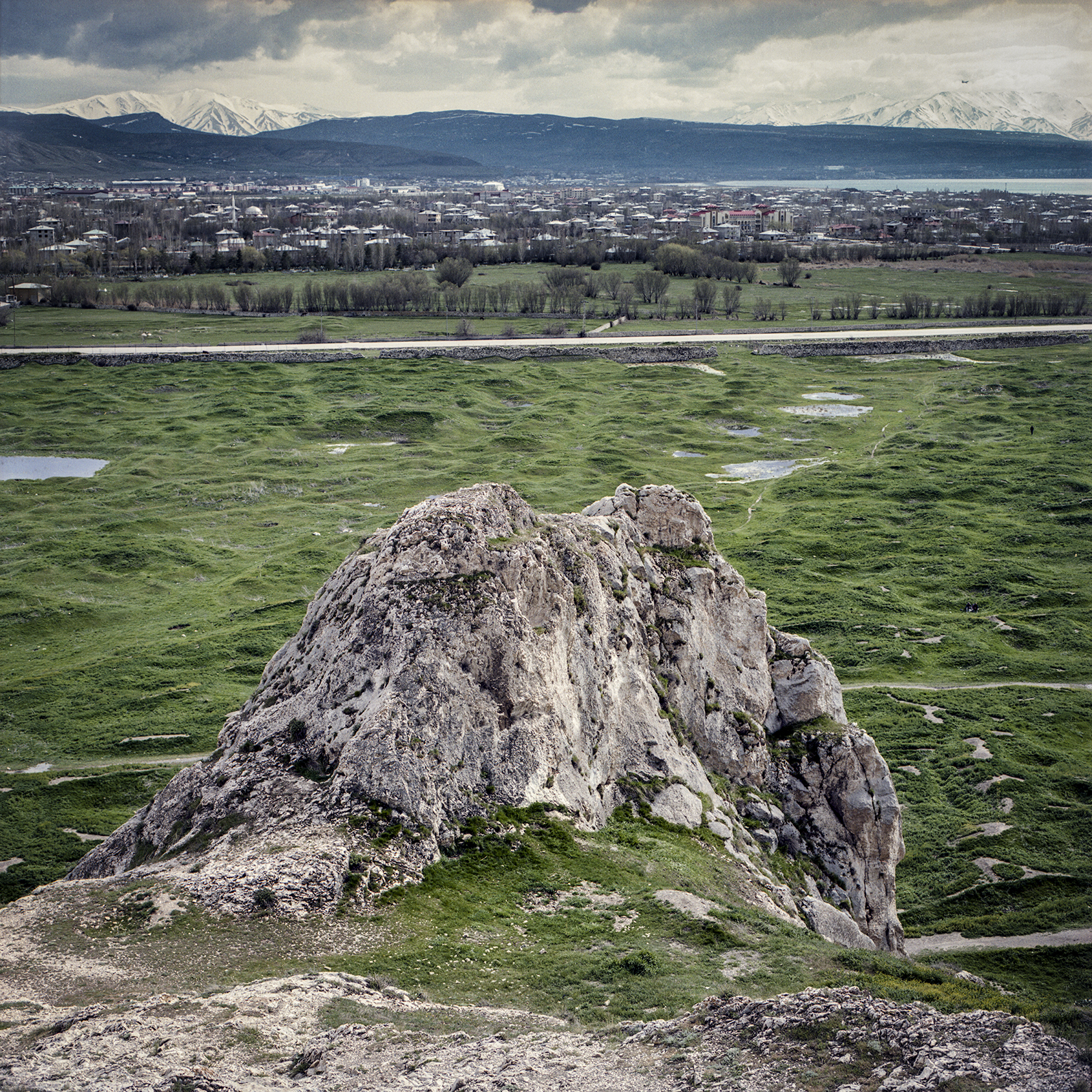
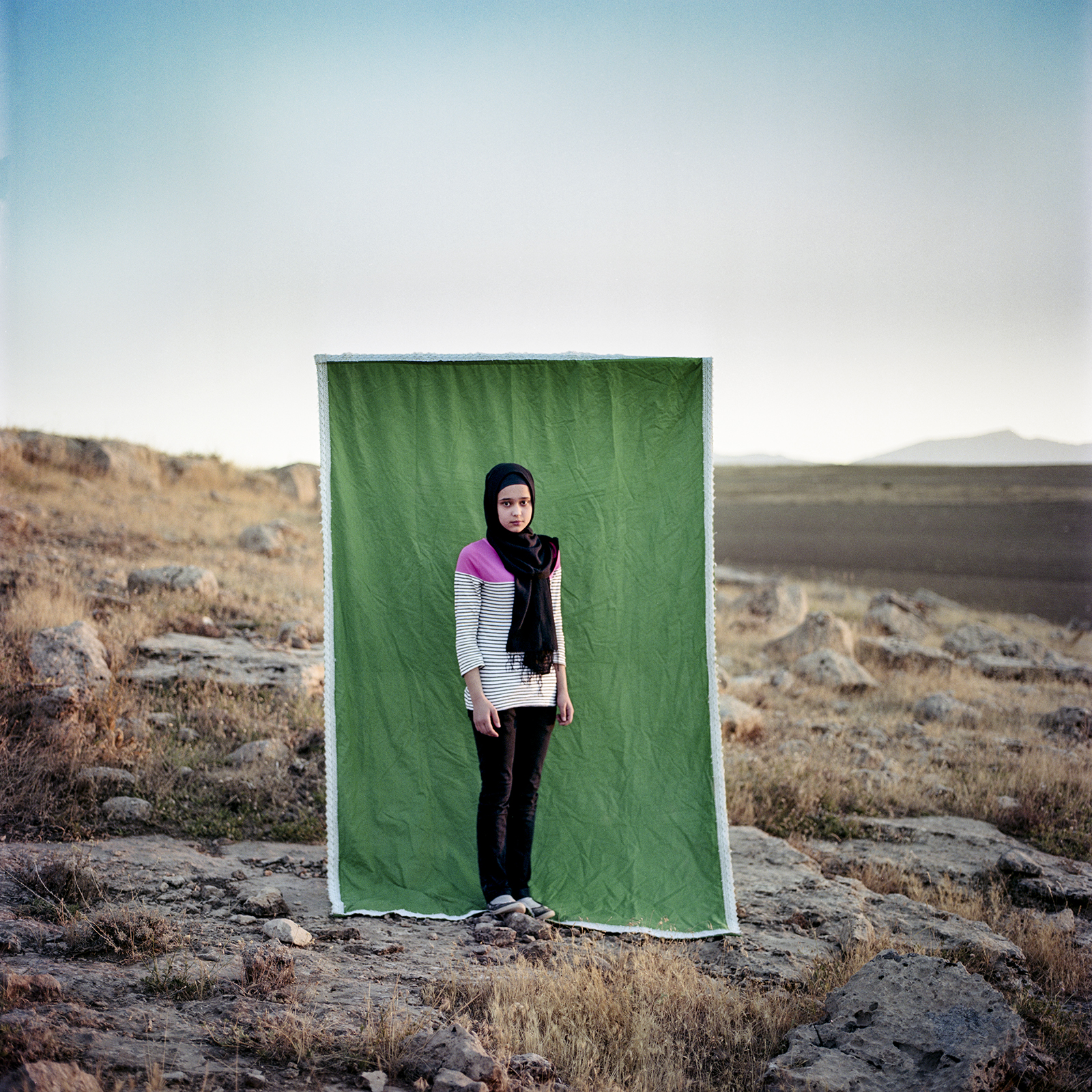
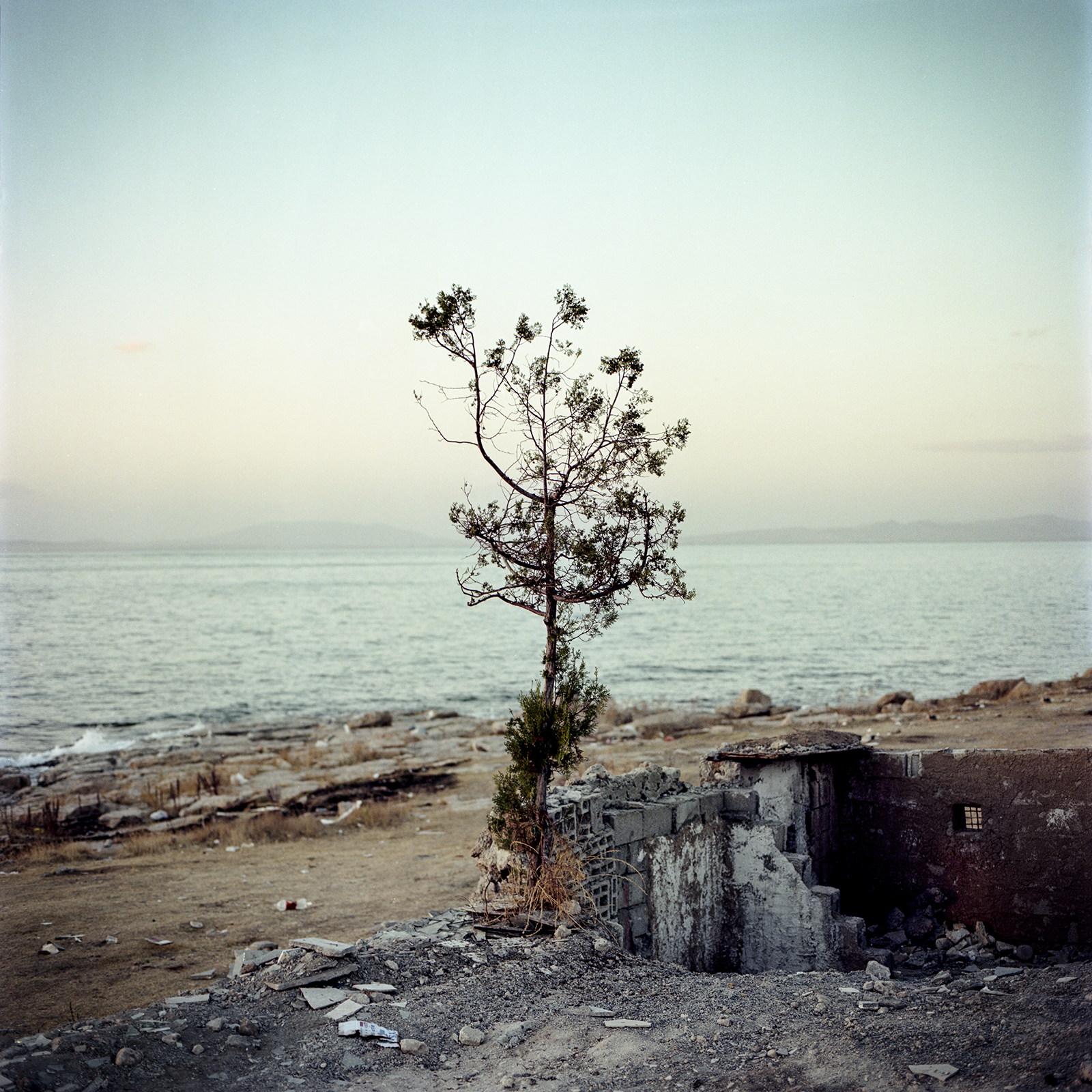

Yalım: In "Beyond The River", like "Araf", there is an emotional connection to the subject rather than an objective view. Can you tell us about the process of "Beyond The River", too?
Ali: I love connecting with where I am going. I approach in this sense. In Beyond The River, I had troubles, but some people protected me too. So, I thought I could have expressed what I wanted to do. That I communicated intimately. It is very important to be open and to be able to explain your matter perspicuously. This affects the person's position on his/her work and gives this trust to the people. This is crucial. They called me a treasure hunter in the village or they were obsessed with from where I shopped. Gendarmery invaded my home 3-4 times, and etc.
Because of bureaucratic reasons, I was first met with a bad reaction in Bagaran, too. At my second visit, we were hugging with the headman of the village. It is all about believing in what I want to do and having a good communication with the people. And most importantly, I didn't always use the camera. Although I spent 5-6 months there, most of the time was spent eating with people, being drunk with them, and helping them in their daily life. But I was always questioning what I was expecting when I came back. Think about it, you are going to Kars and Armenia, and coming back with nothing. When I first started to this project, I was so excited for experiencing being on the border for the first time. Then when I started to live there and get involved in daily life, the subject began to turn into something that I am in. Because I began to live, see, and feel there. I started to feel that there was something happening beyond the routine village life. How could you approach people, listen to them, try to understand them without feeling it. What is important in this sense is the emotional bond and experience as you said, too. The photography comes after.
Ezgi: At this point, I am thinking the name of your workshops: "The Other Ways of Telling", for example. Saying "ways of telling" has a side reminding us that we cannot have a standardization of expression in any subject we pursue with many standards, especially, from the beginning, in a matter of documentary.
Ali: I think I am not very good at workshop titles. But a person who comes directly with the "I am taking pictures" impulse does not have much effect on me. The thing that creates the real effect is the story that one tells, that one finds a meaning in it, and one will find a meaning in it. Photography is technically not something that is hard to produce anyway. Then I think how we can look at the story someone wants to tell us, how we can discuss it. The subject is primarily about understanding the person and even the place that people aim to photograph. It is about concentrating on the story with body and soul, and the improving the production practices and the aesthetic point of view. For example, if you are at the center of your subject. How can anybody express themselves in the photograph artistically, without questioning themselves, questioning their existence, fighting with themselves and without proceeding? I think that a project that does not position its subject on the center, and does not rethink emotionally and informationally; cannot go far beyond being a copy or producing "technically" well. For example, when I look at the photographs of d'Agata, I feel something else, I can really feel the relationship he has with life and himself. Therefore, his photography attracts me, and I want to look more. I cannot name this feeling coming inside of me. Finally; humbly, the photography is a journey for me, a part of my experiences. It is not something intended.
Ezgi: That was the first concern you had which you told us. We are looking at further things here instead of a cliche documentary photography approaches.
Ali: Thank you. This is about how the documentary photography is dealt with by the photographer here. For me, the decisive thing here is the question of being involved and being a witness. It covers both I think, but it is more of a tool to be involved. With my existence and photography, I am trying to get involved in a place by being more than a witness. Naturally, a personal story is developing at this point. The result is based on what I feel and how I approach the subject, but I always get something feeding, shaping, and improving from there.
İpek: "Beyond The River" was exhibited both in Ankara and Yerevan. I was wondering if people's impressions were different. Moreover, I also wonder about the impression difference between metropolitan people and people from the border.
Ali: What impressed me the most was the reactions when I took this book to the people living in the border district. This was very precious. Because people saw inside of the houses that they saw from a distance. They saw who lives in that house. There was a response from an old couple that I photographed. After taking that photograph, I printed it and went back to the village. When I went and return back one more time, I heard that the man in the photo was dead. The wife said, "Good thing you brought me this photo, I keep it under my pillow and I feel like he is still here". Through this photograph, she developed a new relationship with her husband. And it became something very special for her. The thing that the photography completed by using memory/ mneme/ permanence is very important.
The exhibition was held at the Contemporary Arts Center in Ankara. I got good reactions here. The exhibition was based on the audial stories we collected and combining photographs to ambiguate the boundary. The audience was touring through voices, not knowing where the border was. Turkish, Armenian sounds were coming in etc. At this point, the reactions I received from the audience were positive. I received very nice reactions in Armenia, too. The exhibition was not very advertised, but the state channel came for visiting. I got nice reactions the next day when I was walking down the street.
Here is my approach to photography basically. For me, it does not have any importance. The format can be anything. I can bring all sorts of things together. Whether it is a photograph I produced, a visual or literary product I found. In his book, Confabulations, John Berger mentions Abdulkareem Kasid, a poet and an orphan. I reached that poet and wrote that I wanted to use this poem. He welcomed the idea and I used the poem in the dummy-book of Araf. A book shows up with the synergy of the poem and the photographs. I am not sure about the results yet. The book hasn't had a particular format yet, but it sounds like there is something overlapping with the poem. The sense of that poem, the feeling that I got from it is very strong, in this sense I think that the poem and photographs overlap with each other. It is progressing pretty well.
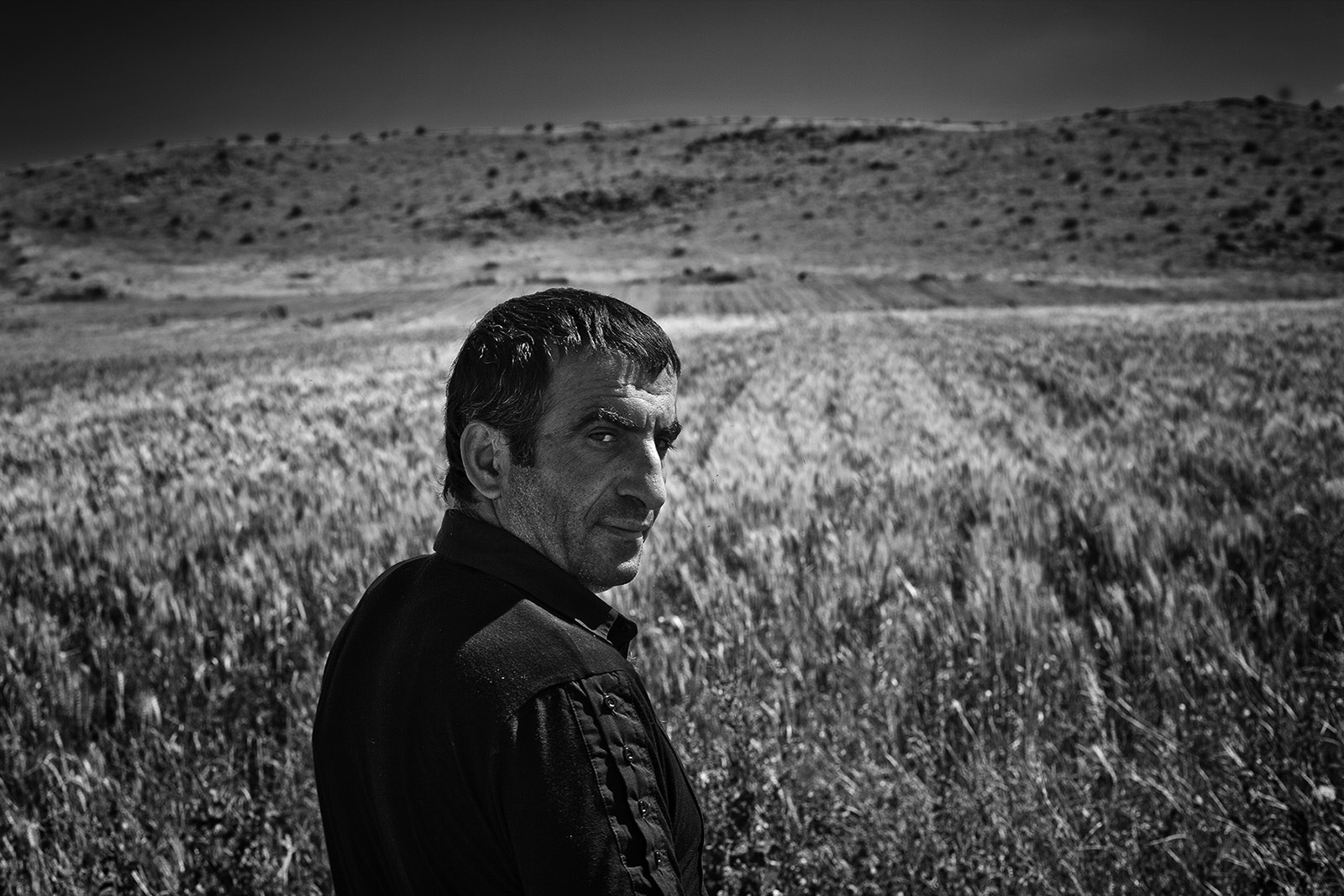
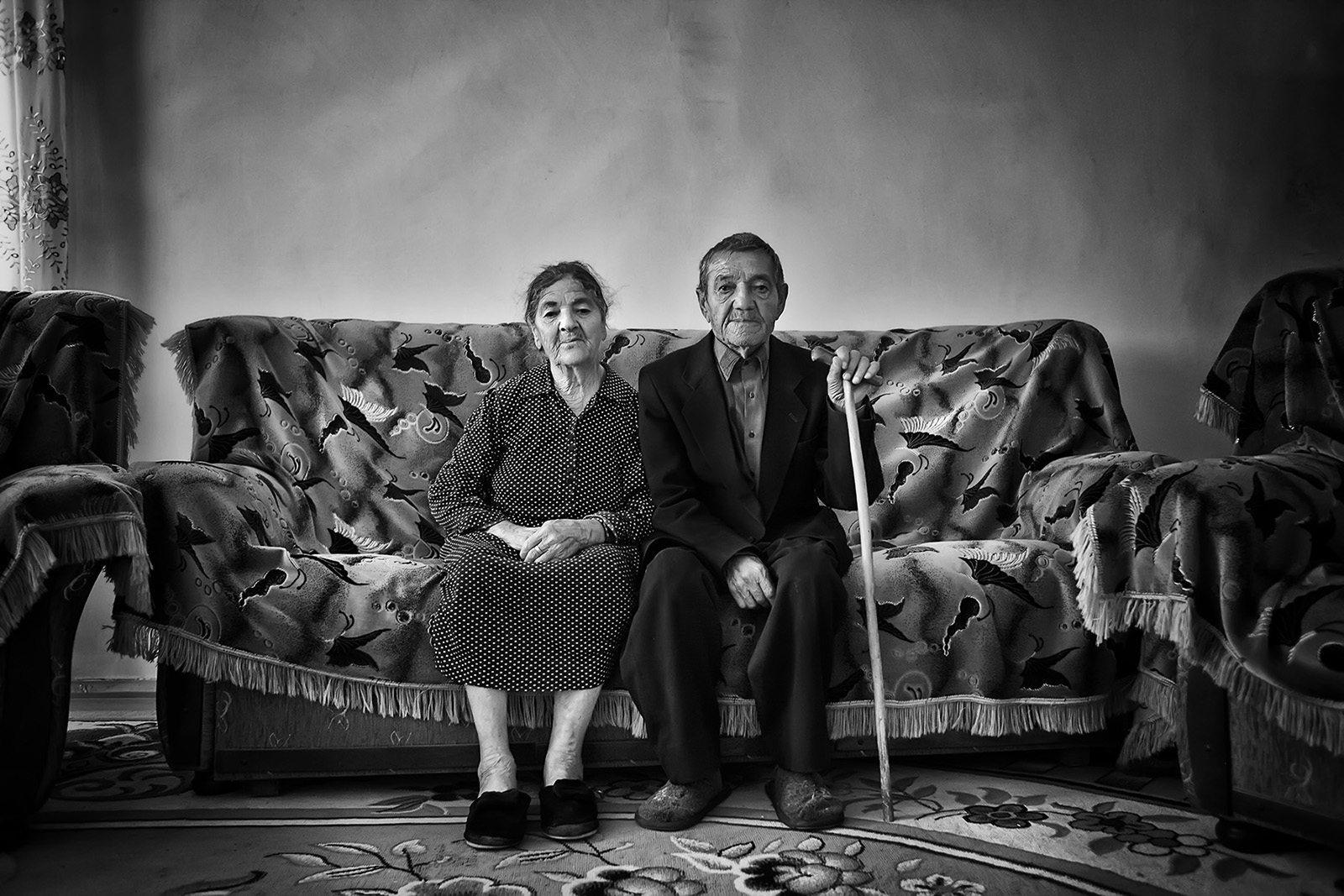
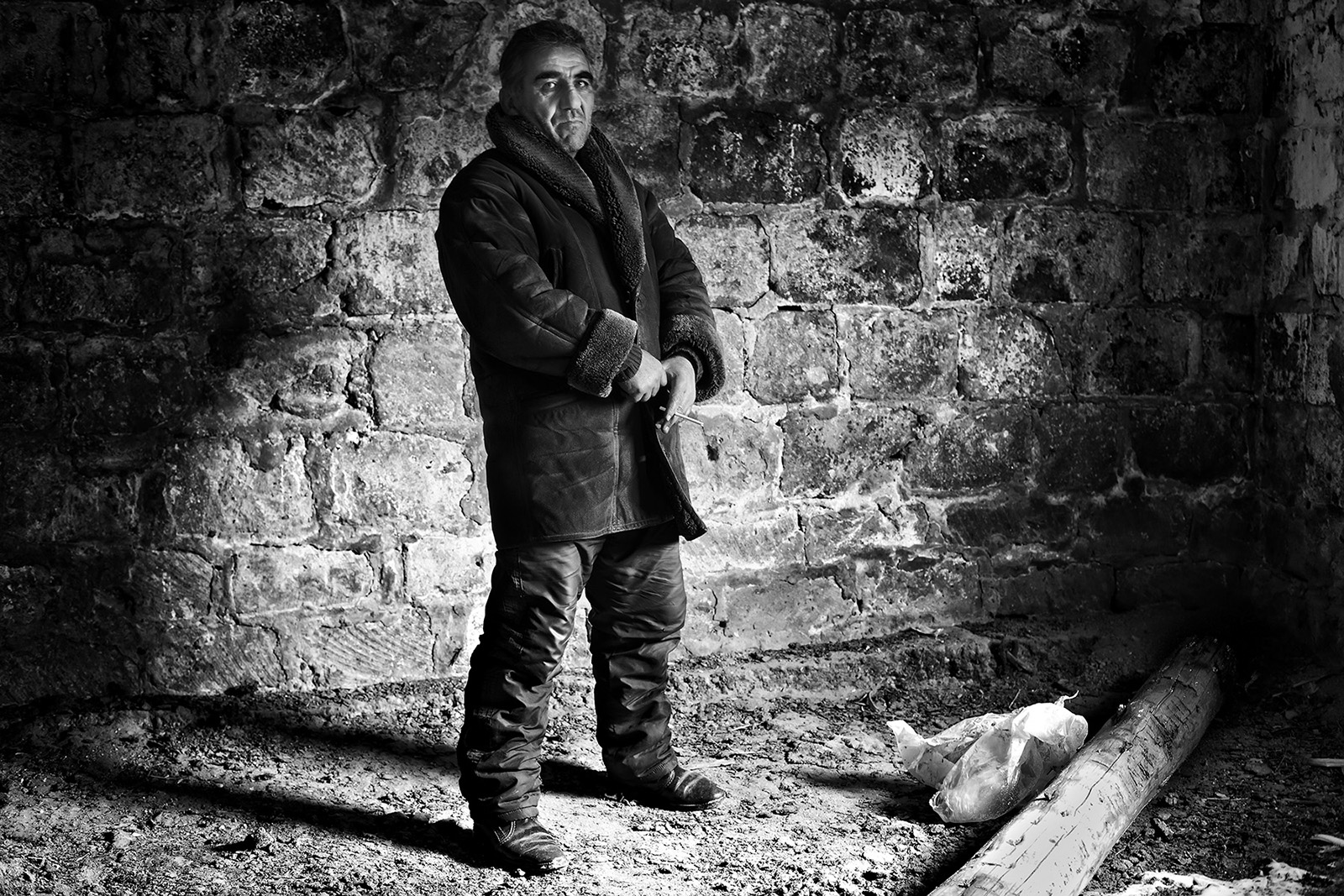
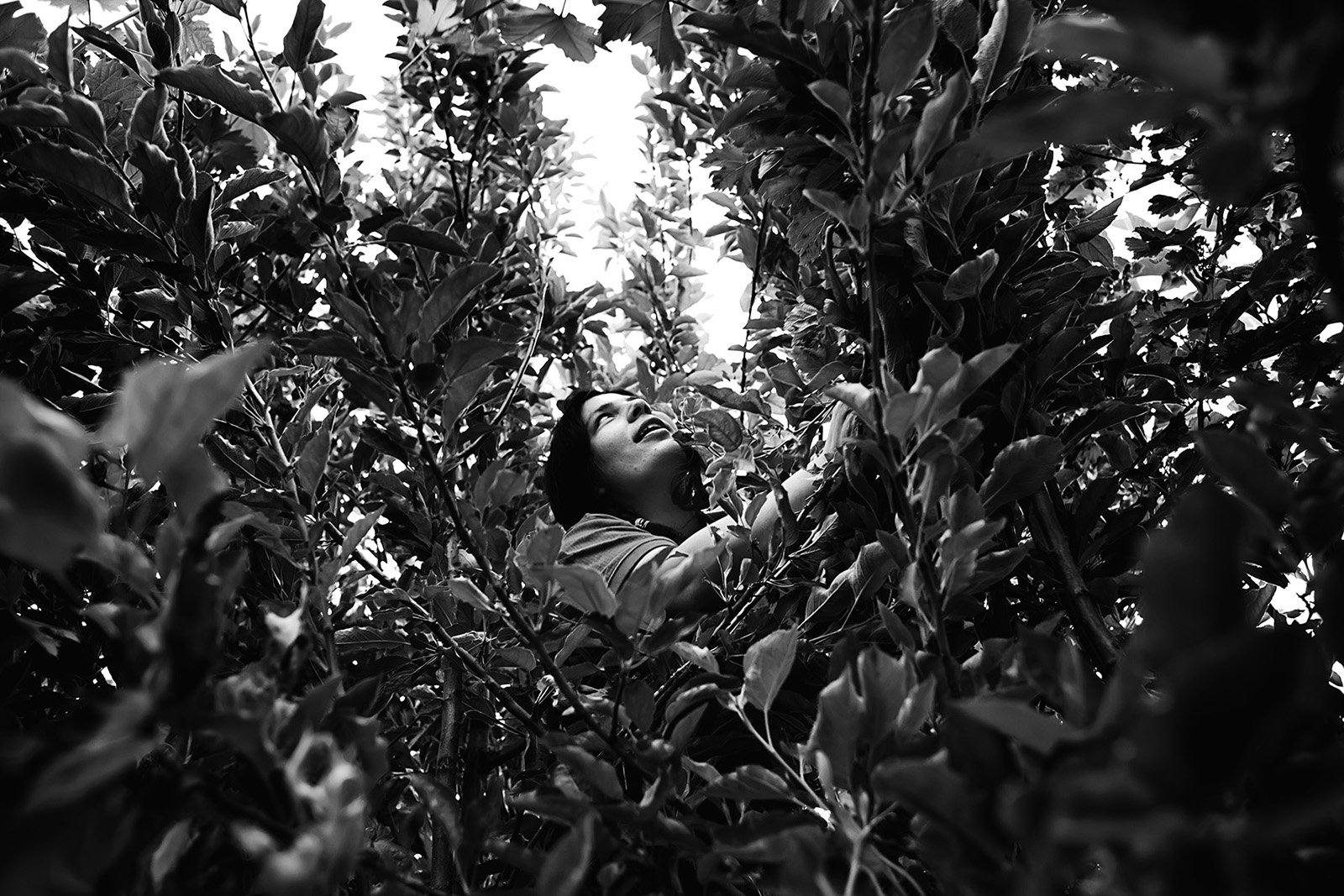
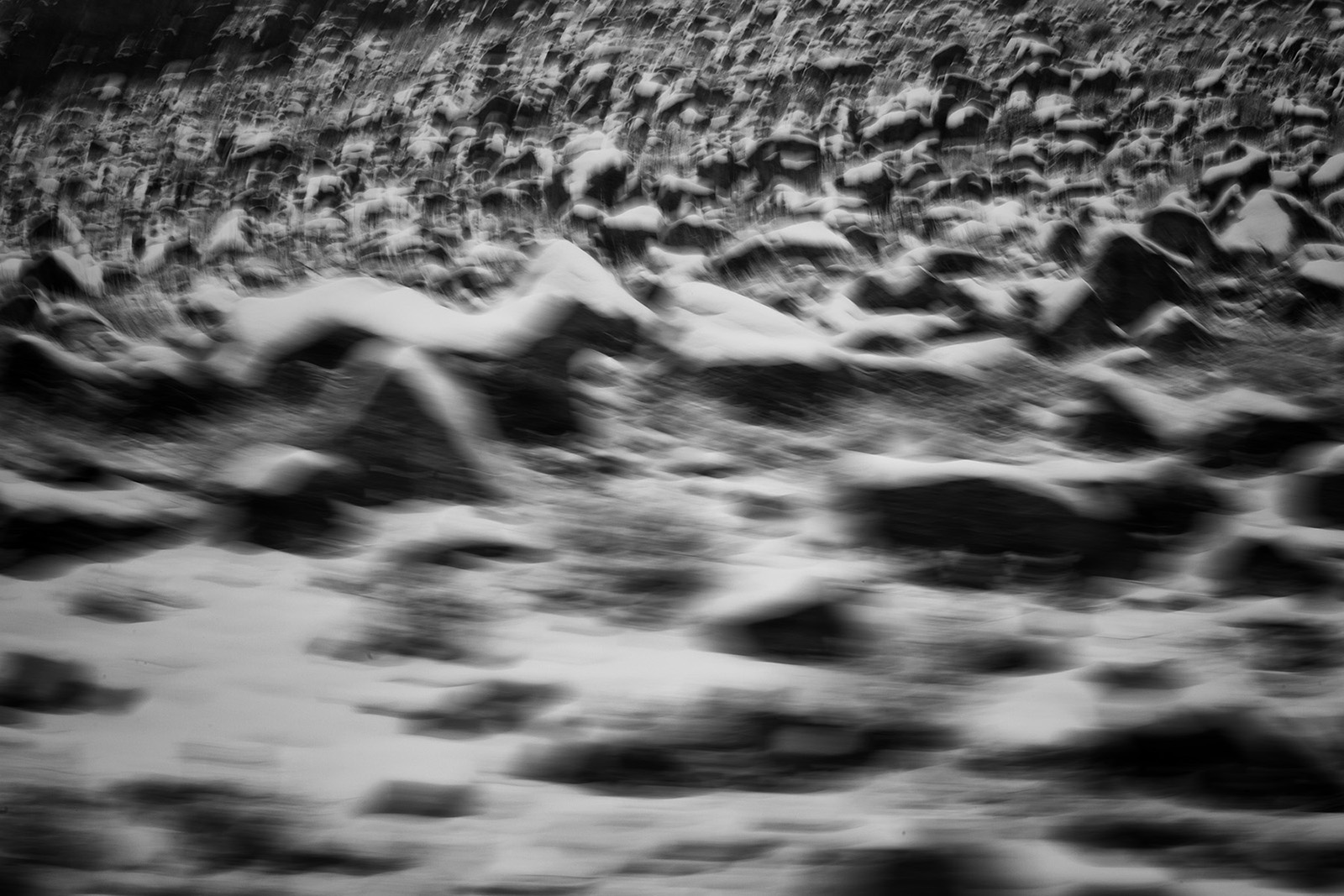
İpek: You had a companionship with Karin Karakaşlı and Süreyya Karcabey in "Beyond The River" I love the words of Karin Karakaşlı very much; she has a blue and naive atmosphere in everything she creates, and your work was like that, too. It seems as if you had a nice walk by holding hands of each other. After your words, it felt so nice.
Ali: What you produce is certain: the photography. But it transforms when it somehow collaborates with another element, it creates other possibilities and potentials. I was very happy when I made contact with Karin Karakaşlı with this offer and she accepted it. Because we share the same perspective. It is same with Süreyya Karacabey, too. She approached from a very different perspective, provided something different at the end of the book. We have made a nice work together. There is something in Araf collaborating with the poem of Abdulkareem Kasid. The poet talks about a mood of being an orphanage in his poem. The people I work with are the subjects of this. The story becomes something else when the text collaborates with the photographs and they walk together. In the end, a story shows up with the different approaches and practices surrounding itself. But I do not say that this is always mandatory and valid.
Yalım: I have a final question about the matter of the book. In the recent years, the concept of the book has become more popular as a photobook. I have met with your book before the photobook was not something that we see this much. This is same for all three of us. What was the relationship you had with this book and the concept of photobooks? Was it something parallel with the exhibition or did you have an awareness about photobooks?
Ali: The book is more important to me. It is far more important than the exhibition. It is the permanent part, so it is important to have something meticulous. But when I was working on Beyond The River, I haven't met the concept of a photobook that much yet. Here, the desires of mine and the graphical designer I worked with overlapped very well. He also found this very valuable and we started to think about how we could transform it. In this way, this book came out. In my current point of view, I think in this way: a book is a visual object with its content; so how can I transform this object as an intensifier of the story and make it interact with the audience? What can I do to get the viewer/ audience closer to the story as they ramble in it? That is my basic concern.
In the meantime, sometimes I look at a book and it seems to me as a playground and turns into an effect in the face of what you are telling, talking more than the work itself. In this case, I can talk about how the book looks aesthetically and its design, because the book itself turns into an object of designing. But the main issue should be to make the story more effective/ open to interaction. When it turns into something with a lot of surprises, only the design of the book begins to impress you. I would like the design to follow the story, not get ahead to it. For example, Carolyn Drake's Wild Pigeon is like this; a book with spot-ons.